Oaxaca, Mexico.
Travel & Tour
Pictures, Photos, Information, Images, & Reviews.
George & Eve DeLange
Google Map To The Dainzu Archaeological Ruins, Oaxaca, Mexico.
View Larger Map
We Are Proud Of Our SafeSurf Rating!
Click On Any Of The Following Links By Amazon.Com
For Books Or Videos About The Zapotec People, In Mexico. No Obligation!
Dainzú is a Zapotec archaeological site located in the eastern side of the Valles Centrales de Oaxaca, about 20 km south-east of the city of Oaxaca, Oaxaca State, Mexico.
It is an ancient village near to and contemporary with Monte Alban and Mitla, with an earlier development.
Dainzú was first occupied 700-600 BC but the main phase of occupation dates from about 200 BC to 350 AD.
The site was excavated in 1965 by Mexican archaeologist Ignacio Bernal.
Dainzú (dain-ZOO), a historic site, in central Oaxaca, Mexico, 16 mi/25 km SE of Oaxaca, on a dirt road, off Mexican Highway 190, between Oaxaca and Mitla. In Zapotec Dainzu means "hill of the organ cactus." Alhough most of this once large city remains un-excavated, what is known suggests that the city was largely contemporary with Monte Alban. The ruins here are one of the best sites in the area.
Dainzú is at the base of a west-facing defensible hill with a beautiful view of the Tlacolula valley. The name Dainzú is derived from the Zapotec danni (meaning hill) and zu (meaning organ cactus). Dainzú was occupied from about 600 B.C. to 1200 A.D. It reached its zenith between 600 B.C. and 200 A.D.Many stone carvings depicting ballplayers have been found at this site and it is thought that the ballgame may have had special significance at Dainzú.
The three main structures have been named: Building A, Building B and the Ball Court Area.
The most impressive structure at Dainzu is Building A which is built into a defensible position hillside overlooking a nearby stream. It has four platforms constructed with stone and mud morter.
At the south end of Building A at the "Gallery Of Monumental Sculpture" are a set of about 17stone carvings, which mainly show ballplayers at the Juego de Pelota, or ballcourt playing the ballgame. The ballplayers stone bas-relief gallery shows the ball players dressed in feline garments, wearing gloves, feline like masks and they are holding a small ball in their hands. It is assumed that the four Deities that seem to be the Four Gods of Fire who blessed the ball game and are also included in these rock carvings.
Located on the Western slope below Building A are outlying structures, including temples, patios, stairways, and a cistern.
A ballcourt is located SW of Building A futher down the slope. The court, shaped as a double "I" has been partially rebuilt. It features two lateral platforms, sustained by a wall carved in stone that forms the court. The ball court dates to about 1,000 AC.
This site has been built on artificial terraces, which are displayed in oblique positions, from the lower side of the valley over the western end of the hill. This is what gives the place its name. The main construction is formed by three intercommunicated buildings that feature different staircases, terraces, yards and rooms. The buildings architectural style and organization have defined them as the administrative center for this ancient village.
We are including photos of all the ballplayer and deity carvings we could locate from the shelter of Building A.
Building B. This building is a huge platform, surrounded by different staircases, yards and rooms, all divided by stone walls. One of the most outstanding sights here is the Jaguar Tomb. The tomb is carved in stone in the shape of a jaguar with the lintel forming the head and the doorjambs forming its front legs. Also included in Structure B is the Amarillo Temple which faces West and was painted with yellow ocre, probably for religious reasons.
The Xoxocotlán International airport (IATA: OAX, ICAO: MMOX) Is the international airport located at Oaxaca, Oaxaca, Mexico. It handles the national and international air traffic for the city of Oaxaca.
We have links on this page that will connect you with flights into and out of the Xoxocotlán International airport and allow you to book any of several of the best hotels in Oaxaca.
We suggest getting a hotel and then letting them arrange either a car or a tour of Oaxaca. If you call their Concierge Services ahead of your arrival, all of this can be pre-arranged for you.
We do this all the time, when traveling in Mexico. It is safe and it works!!! We have never experienced a problem, doing it this way!
We have placed links to Priceline.com on this page so you can arrange your flights into and out of Oaxaca; as well as your hotel, when visiting this area. We found that generally speaking, they provide the best hotel and air flight prices into Oaxaca.
Click On Any Of The Following Links By Amazon.Com
For Books Or Videos About Oaxaca Mexico. No Obligation!

Dainzú Structure A, Building B In Foreground.
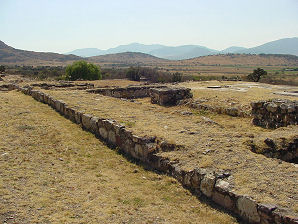

Structure B. Structure B. 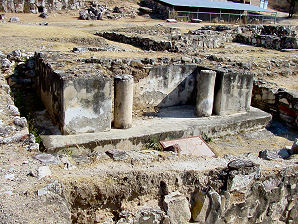
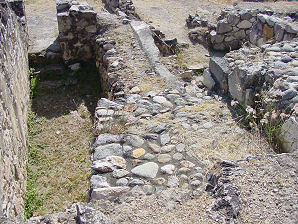
Amarillo Temple. Part Of
Amarillo Temple. 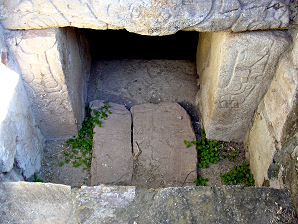
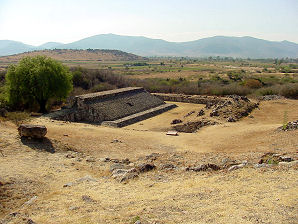
Tomb Seven.
"Jaguar Tomb." Ballcourt. 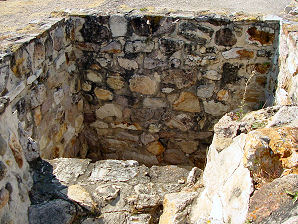
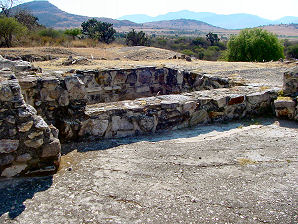
Cistern. Cistern. 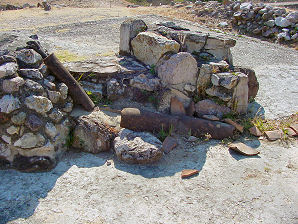
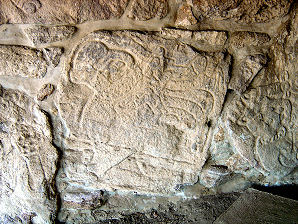
Cistern Drainage Tile. Ball Player Carving. 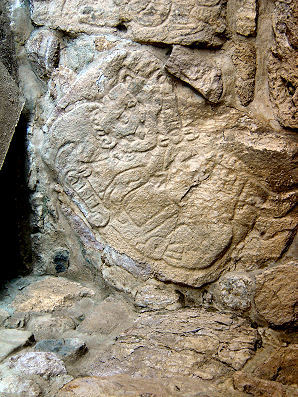
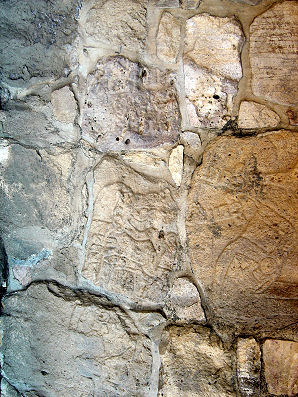
Ball Player Carving. Ball Player Carving. 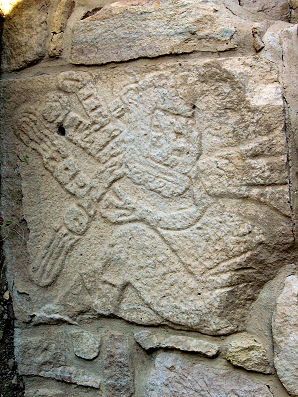
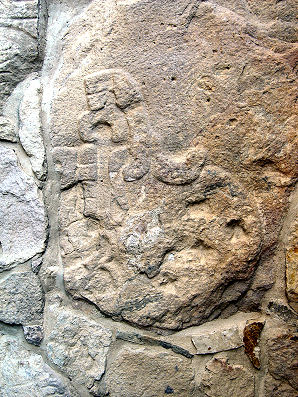
Ball Player Carving. Ball Player Carving. 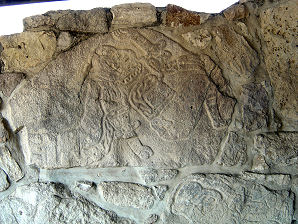
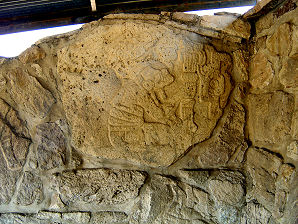
Ball Player Carving. Ball Player Carving. 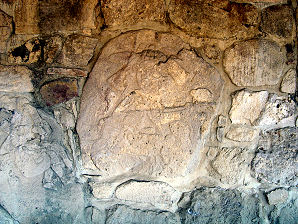
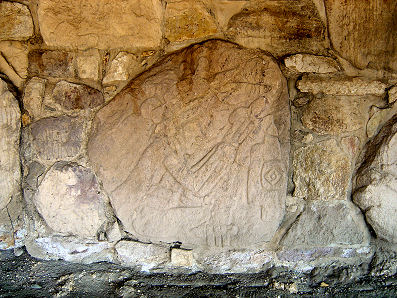
Ball Player Carving. Ball Player Carving. 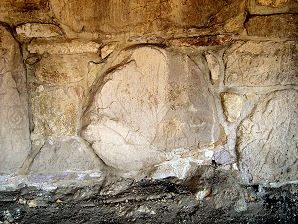
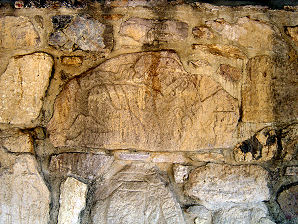
Ball Player Carving. Ball Player Carving. 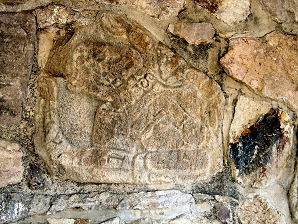
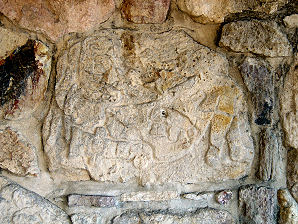
Mesoamerican
Ball Player Carving. Mesoamerican
Ball Player Carving. 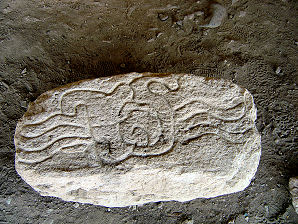
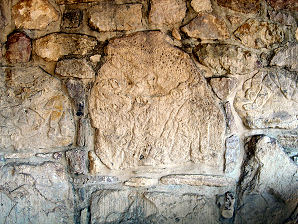
Ball Player Carving. Ball Player Carvings. 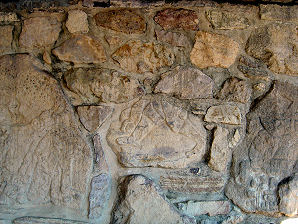
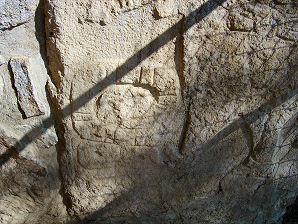
Ballplayer Carvings. Ballplayer Carving.
We Are Proud Of Our SafeSurf Rating!
Click On Any Of The Following Links By Amazon.Com
For Books Or Videos About Touring In Mexico. No Obligation!
Click On The Bottom Link Marked GO, Then Look At The Bottom Of The Page That Comes Up.
There You Will See Travel Agencies That Are Recommended By Amazon.Com
For Touring In Mexico. No Obligation!
Here Are Some Links To The Very Best & Most Popular Items Sold On Amazon.Com
To Learn More! Click The Links Below. No Obligation, Of Course!
Other Oaxaca Region Ruins & Attractions!
Dainzú is a Zapotec archaeological site located in the eastern side of the Valles Centrales de Oaxaca, about 20 km south-east of the city of Oaxaca, Oaxaca State, Mexico. It is an ancient village near to and contemporary with Monte Alban and Mitla, with an earlier development. Dainzú was first occupied 700-600 BC but the main phase of occupation dates from about 200 BC to 350 AD. The site was excavated in 1965 by Mexican archaeologist Ignacio Bernal. Dainzú (dain-ZOO), a historic site, in central Oaxaca, Mexico, 16 mi/25 km SE of Oaxaca, on a dirt road, off Mexican Highway 190, between Oaxaca and Mitla. In Zapotec Dainzu means "hill of the organ cactus." Alhough most of this once large city remains un-excavated, what is known suggests that the city was largely contemporary with Monte Alban. The ruins here are one of the best sites in the area. Dainzú is at the base of a west-facing defensible hill with a beautiful view of the Tlacolula valley. The name Dainzú is derived from the Zapotec danni (meaning hill) and zu (meaning organ cactus). Dainzú was occupied from about 600 B.C. to 1200 A.D. It reached its zenith between 600 B.C. and 200 A.D.Many stone carvings depicting ballplayers have been found at this site and it is thought that the ballgame may have had special significance at Dainzú. The three main structures have been named: Building A, Building B and the Ball Court Area. The most impressive structure at Dainzu is Building A which is built into a defensible position hillside overlooking a nearby stream. It has four platforms constructed with stone and mud morter. At the south end of Building A at the "Gallery Of Monumental Sculpture" are a set of about 17stone carvings, which mainly show ballplayers at the Juego de Pelota, or ballcourt playing the ballgame. The ballplayers stone bas-relief gallery shows the ball players dressed in feline garments, wearing gloves, feline like masks and they are holding a small ball in their hands. It is assumed that the four Deities that seem to be the Four Gods of Fire who blessed the ball game and are also included in these rock carvings. Located on the Western slope below Building A are outlying structures, including temples, patios, stairways, and a cistern. A ballcourt is located SW of Building A futher down the slope. The court, shaped as a double "I" has been partially rebuilt. It features two lateral platforms, sustained by a wall carved in stone that forms the court. The ball court dates to about 1,000 AC. This site has been built on artificial terraces, which are displayed in oblique positions, from the lower side of the valley over the western end of the hill. This is what gives the place its name. The main construction is formed by three intercommunicated buildings that feature different staircases, terraces, yards and rooms. The buildings architectural style and organization have defined them as the administrative center for this ancient village. We are including photos of all the ballplayer and deity carvings we could locate from the shelter of Building A. Building B. This building is a huge platform, surrounded by different staircases, yards and rooms, all divided by stone walls. One of the most outstanding sights here is the Jaguar Tomb. The tomb is carved in stone in the shape of a jaguar with the lintel forming the head and the doorjambs forming its front legs. Also included in Structure B is the Amarillo Temple which faces West and was painted with yellow ocre, probably for religious reasons.
|
The Xoxocotlán International airport (IATA: OAX, ICAO: MMOX) Is the international airport located at Oaxaca, Oaxaca, Mexico. It handles the national and international air traffic for the city of Oaxaca. We have links on this page that will connect you with flights into and out of the Xoxocotlán International airport and allow you to book any of several of the best hotels in Oaxaca. We suggest getting a hotel and then letting them arrange either a car or a tour of Oaxaca. If you call their Concierge Services ahead of your arrival, all of this can be pre-arranged for you. We do this all the time, when traveling in Mexico. It is safe and it works!!! We have never experienced a problem, doing it this way! We have placed links to Priceline.com on this page so you can arrange your flights into and out of Oaxaca; as well as your hotel, when visiting this area. We found that generally speaking, they provide the best hotel and air flight prices into Oaxaca.
|
Click On Any Of The Following Links By Amazon.Com
For Books Or Videos About Oaxaca Mexico. No Obligation!
 |
| Dainzú Structure A, Building B In Foreground. |
|---|
 |  |
| Structure B. | Structure B. |
|---|---|
 |  |
| Amarillo Temple. | Part Of Amarillo Temple. |
 |  |
| Tomb Seven. "Jaguar Tomb." | Ballcourt. |
 |  |
| Cistern. | Cistern. |
 |  |
| Cistern Drainage Tile. | Ball Player Carving. |
 |  |
| Ball Player Carving. | Ball Player Carving. |
 |  |
| Ball Player Carving. | Ball Player Carving. |
 |  |
| Ball Player Carving. | Ball Player Carving. |
 |  |
| Ball Player Carving. | Ball Player Carving. |
 |  |
| Ball Player Carving. | Ball Player Carving. |
 |  |
| Mesoamerican Ball Player Carving. | Mesoamerican Ball Player Carving. |
 |  |
| Ball Player Carving. | Ball Player Carvings. |
 |  |
| Ballplayer Carvings. | Ballplayer Carving. |
We Are Proud Of Our SafeSurf Rating!
Click On Any Of The Following Links By Amazon.Com
For Books Or Videos About Touring In Mexico. No Obligation!
Click On The Bottom Link Marked GO, Then Look At The Bottom Of The Page That Comes Up.
There You Will See Travel Agencies That Are Recommended By Amazon.Com
For Touring In Mexico. No Obligation!
Here Are Some Links To The Very Best & Most Popular Items Sold On Amazon.Com
To Learn More! Click The Links Below. No Obligation, Of Course!
Other Oaxaca Region Ruins & Attractions!
There You Will See Travel Agencies That Are Recommended By Amazon.Com
For Touring In Mexico. No Obligation!
Here Are Some Links To The Very Best & Most Popular Items Sold On Amazon.Com
To Learn More! Click The Links Below. No Obligation, Of Course!
Other Oaxaca Region Ruins & Attractions!



